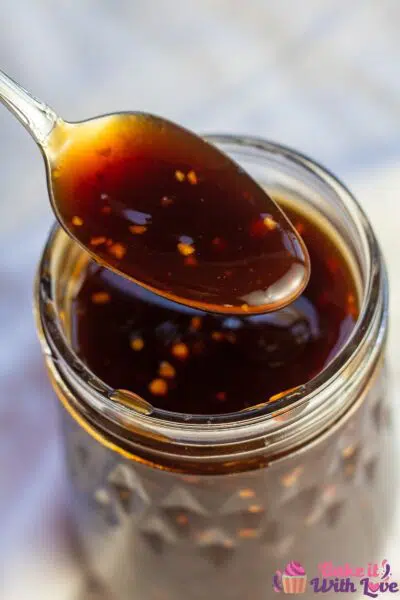These Vietnamese and Thai-inspired spring rolls, known as Gỏi Cuốn, are perfect for a light lunch, dinner, or appetizer. Filled with fresh herbs, savory pork, sweet shrimp, and crunchy vegetables, each roll is a testament to the rich culinary heritage of Southeast Asia. My easy-to-follow recipe and tips will guide you to create these mouthwatering Thai spring rolls that will surely be a new favorite!
Homemade Crispy Spring Rolls with Pork and Vegetables
Delight in these crispy, homemade spring rolls packed with a savory mix of pork, vegetables, and noodles. The filling perfectly balances flavor and texture and is a delightful contrast to the crisp, fried wrapper!
Embrace the versatility of this flavorful appetizer by customizing it with your favorite ingredients, and enjoy a taste of Southeast Asia right at home.
Learn the difference between Thai and Vietnamese spring rolls here.

Jump to:
🥘 Ingredients
For the Spring Rolls
- Spring Roll Wrappers - You'll need 20 large wrappers to make the foundation for your delicious spring rolls.
- Frying Oil - A neutral oil like vegetable or canola is ideal. Use enough to fry the spring rolls (in your Dutch oven, wok, or fryer).
Filling Mixture
- Noodles - ¾ cup bean thread noodles. Also known as glass noodles, they add a unique texture.
- Garlic - 3 cloves or 1 tablespoon minced garlic.
- Pepper - 1 teaspoon freshly ground black peppercorns.
- Coriander Roots - 2, finely chopped. These contribute a deep, earthy note.
- Cooking Oil - 1 tablespoon extra virgin olive oil (EVOO) or your preferred oil for sautéing the garlic and spices.
- Pork - 7 ounces of ground pork to fry and crumble for a savory depth of flavor.
- Carrot - 1 cup grated carrot to add a touch of sweetness and vibrant color to the filling.
- Cabbage - 2 cups of finely sliced green cabbage to add crunch and volume to the filling mixture.
- Fish Sauce - 2 tablespoons to infuse the filling with a rich umami flavor.
For Rolling & Sealing
- All-Purpose Flour - 3 tablespoons to make a paste for sealing the rolls.
- Water - 3 tablespoons to mix with the flour to form the sealing paste.
*Be sure to see the free printable recipe card below for ingredients, exact amounts & instructions with tips!*

🔪 Instructions
You'll need a few kitchen essentials for this recipe. Grab a saucepan for deep frying, a mortar and pestle for preparing the garlic paste, and standard prep tools like a cutting board, measuring cups or spoons, and a knife.
This recipe yields about 20 large spring rolls, ideal for a family meal or a gathering with friends.
Prepare the Filling
Step 1: Soak the Noodles. Soak ¾ cup (105 grams) of bean thread noodles in warm water for about 5 minutes. Once softened, drain the water and cut the noodles into shorter pieces for easier handling.
Step 2: Create the Garlic Paste. Using a mortar and pestle, combine 3 cloves (9 grams) of garlic, 1 teaspoon (4.4 grams) of freshly ground black peppercorns, and 2 chopped (164 grams) coriander roots. Grind them into a fine paste. This mixture will infuse your filling with a burst of flavor.
Step 3: Cook the Pork. In a skillet, heat 1 tablespoon (14.79 milliliters) of extra virgin olive oil (EVOO). Add the garlic paste and cook for about a minute to release its flavors. Then, add 7 ounces (198.45 grams) of ground pork to the skillet. Cook the pork until it's just done, ensuring it's thoroughly cooked but still tender.
Step 4: Combine with Vegetables. To the skillet with the pork, add the pre-soaked noodles, 1 cup (128 grams) of grated carrot, and 2 cups (140 grams) of finely sliced cabbage. Pour in 2 tablespoons (29.57 milliliters) of fish sauce for an umami kick.
Step 5: Cook the filling until tender. Cook everything together until the vegetables are soft, and the flavors are well combined. Once done, set the mixture aside to cool. This will be your spring roll filling.
Roll the Spring Rolls
Step 6: Prepare the Sealing Paste. In a small bowl, whisk together 3 tablespoons of all-purpose flour and 3 tablespoons of water. This will create a thick paste that you'll use to seal your spring rolls.
Step 7: Assemble the Spring Rolls. Lay out one of the 20 large spring roll wrappers. Place a heaping tablespoon of your prepared filling onto the center of the wrapper. Carefully roll the spring roll, folding it like an envelope. Use a small amount of the flour-water paste to seal the edges.
Fry the Spring Rolls
Step 8: Heat the Oil. Pour enough oil into a saucepan for deep frying. Heat the oil to the appropriate temperature for frying. Once the oil is hot, carefully add the spring rolls. Fry them in small batches to avoid overcrowding, which can lead to uneven cooking. Each batch should take about 3-4 minutes or until the spring rolls are golden and crispy.
Step 9: Drain. After frying, transfer the spring rolls to a wire cooling rack set over a paper towel. This will help drain off any excess oil.
Step 10: Serve. Garnish and serve with one of my dipping sauces like my homemade teriyaki, ponzu sauce, or sweet and sour sauce!



💭 Angela's Pro Tips & Recipe Notes
- Choosing the Right Protein: While this recipe uses minced pork for its rich flavor, feel free to experiment. Chicken, finely minced shrimp, tofu, or a combination of shrimp and chicken can be excellent alternatives. Each option brings its unique taste and texture to the spring rolls.
- Cooling the Filling: Let the filling cool down completely before rolling the spring rolls. Using the filling while still warm can cause the spring roll wrappers to become overly soft and difficult to handle, leading to potential tears.
- Rolling Technique: Aim for a tight wrap when rolling your spring rolls. This helps to minimize air pockets, which can absorb excess oil during frying, potentially affecting the texture and flavor. A tight roll also ensures the filling stays intact while eating.
- Frying Tips: Ensure the oil is at the correct temperature for frying (typically around 350°F/175°C). Frying at the right temperature is vital to achieving a golden, crispy exterior without absorbing too much oil. Fry in small batches to maintain the oil temperature and ensure even cooking.
🥄 Make Ahead Options
If you want to prepare these spring rolls in advance, completely wrap them, but skip the frying step. Lay the assembled spring rolls out on a baking sheet and freeze until solid.
Then, transfer them to a food storage bag or airtight freezer container. They can be kept frozen for 1-2 months. When you're ready to enjoy them, fry them straight from the freezer - no need to thaw.
>>>>See all of my recipes here<<<<
🥡 Storing & Reheating
Store any cooled, leftover spring rolls in a sealed container in the refrigerator. They should keep well for 3-4 days.
Reheating
For reheating, place them on a baking sheet in an oven preheated to 350°F (175°C/Gas Mark 4). Alternatively, an air fryer can be used for a quick and crispy reheating method.

Do you love a recipe you tried? Please leave a 5-star 🌟rating in the recipe card below and/or a review in the comments section further down the page.
Stay in touch with me through social media @ Pinterest, Facebook, Instagram, or Twitter! Subscribe to the newsletter today (no spam, I promise)! Don't forget to tag me when you try one of my recipes!
📖 Recipe Card
Thai Spring Rolls
Ingredients
- 20 large spring roll wrappers
- oil (for deep frying)
Filling
- ¾ cup bean thread noodles (glass noodles or cellophane noodles)
- 3 cloves garlic
- 1 teaspoon black peppercorns
- 2 coriander roots (chopped)
- 1 tablespoon olive oil (extra virgin)
- 7 oz pork (minced)
- 1 cup carrot (grated)
- 2 cups cabbage (finely sliced)
- 2 tablespoon fish sauce
For Rolling
- 3 tablespoon all-purpose flour
- 3 tablespoon water
(Note: 2x or 3x only changes the ingredient list)
Instructions
Prepare the Filling
- Soak ¾ cup bean thread noodles in warm water for 5 minutes to soften them. Then, drain off the water and use scissors to cut them into shorter pieces.
- Using a mortar and pestle to smash the 3 cloves garlic, 1 teaspoon black peppercorns, and 2 coriander roots to a fine paste.
- In a large skillet, heat 1 tablespoon olive oil over medium heat.
- Once hot, add the garlic mixture and cook for about one minute. Then, add 7 oz pork and cook until just cooked through.
- In the same skillet, add the softened noodles, 1 cup carrot, 2 cups cabbage, and 2 tablespoon fish sauce.
- Cook for about 3 minutes or until vegetables are soft. Taste and add more fish sauce if needed. Set aside to cool.
Roll
- In a small mixing bowl, whisk together 3 tablespoon all-purpose flour and 3 tablespoon water to form a thick paste.
- Lay out one of your 20 large spring roll wrappers and place a heaping tablespoon of the filling into the middle.
- Roll the spring roll by folding it like an envelope and then seal it using a small amount of the water and flour mixture. Repeat with the remaining wrappers.
Fry
- Heat enough oil in a saucepan so that you can deep fry your spring rolls.
- Once the oil is hot, fry your spring rolls (working in small batches) for about 3-4 minutes, or until golden in color.
- Remove the cooked spring rolls to a wire cooling rack over a paper towel to drain off the excess oil.
- Serve immediately with your preferred dipping sauce.
Notes
- If you aren't a fan of pork, you can swap it out for chicken, finely minced shrimp, tofu, or even a mixture of both shrimp and chicken.
- Give your filling some time to completely cool down before you start the rolling process. Using it while it is still too warm will make the spring roll wrappers much harder to work with.
- When rolling your spring rolls, you'll want to wrap them as tightly as possible. Any excess air pockets could soak up too much oil and alter the flavor.
- To store: You can keep your spring rolls, once cooled, in a sealed container in the fridge for 3-4 days.
- To reheat: Reheat your spring rolls in the oven on a baking sheet at 350°F (175°C/Gas Mark 4). You could also use your air fryer.
- To make ahead: Completely prepare and wrap your spring rolls, but skip frying them. Instead, you can freeze them on a baking sheet until solid and then transfer them to a food storage bag. They can be frozen for 1-2 months. Deep fry when you are ready.



Comments
No Comments